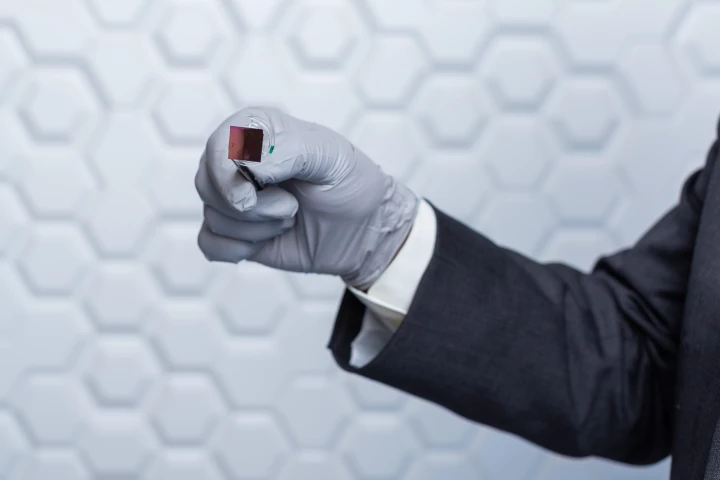Nano
-
A team of researchershas advanced development of a nanochip device that can reprogram cells in the body to become new blood vessels and nerve cells. It could be used to repair brain damage resulting from a stroke or nerve damage caused by diabetes.
-
Researchers at Empa and EPFL have created one of the smallest motors ever made. It’s composed of just 16 atoms, and at that tiny size it seems to function right on the boundary between classical physics and the spooky quantum realm.
-
Antioxidants fight oxidation, which can spoil food and alcohol and harm cells in the body. Now, researchers have woven antioxidants into nanofiber mats, which release the vital compounds slowly and could be useful for food coverings or bandages.
-
Though a long accepted tenet in physics, no experiment has ever directly observed the wave/particle duality of light. Now researchers at the École polytechnique fédérale de Lausanne (EPFL) in Switzerland claim to have captured a photograph of light as both waves and particles in the same image.
-
Researchers at Monash University in Australia claim to have produced nanoscale directional antennas that accurately focus light at the nanoscale and may provide the ultra-narrow beams needed for upcoming nanoelectromechanical systems (NEMS) and the eventual production of lab-on-a-chip devices.
-
A statue so tiny that it cannot be seen by the naked eye has been produced using a new 3D printing technique. Measuring a picayune 20 x 80 x 100 microns, it's claimed the smallest sculpture of the human form ever created.
-
Scientists at the Cockrell School of Engineering at the University of Texas have built and tested what appears to be the world's smallest, fastest, and longest-running nanomotor yet – so small that it could fit inside a single living cell.
-
Scientists have developed a special DNA clamp to act as a diagnostic nano machine. It's capable of detecting genetic mutations responsible for causing cancers, hemophilia, sickle cell anemia and other diseases, more efficiently than existing techniques.
-
Arguably the world’s most famous painting, da Vinci's Mona Lisa has now been copied onto the world’s smallest canvas at the Georgia Institute of Technology.
-
A magnetic capsule robot may replace endoscopy thanks to work being done at Carnegie Mellon University's Nanorobotics lab.
-
UK company develops a $900 fast, portable, and disposable DNA sequencer to support genome research and personalized medicine.
-
The Pill is a new speaker dock, designed specifically for the sixth-generation iPod nano.
Load More











